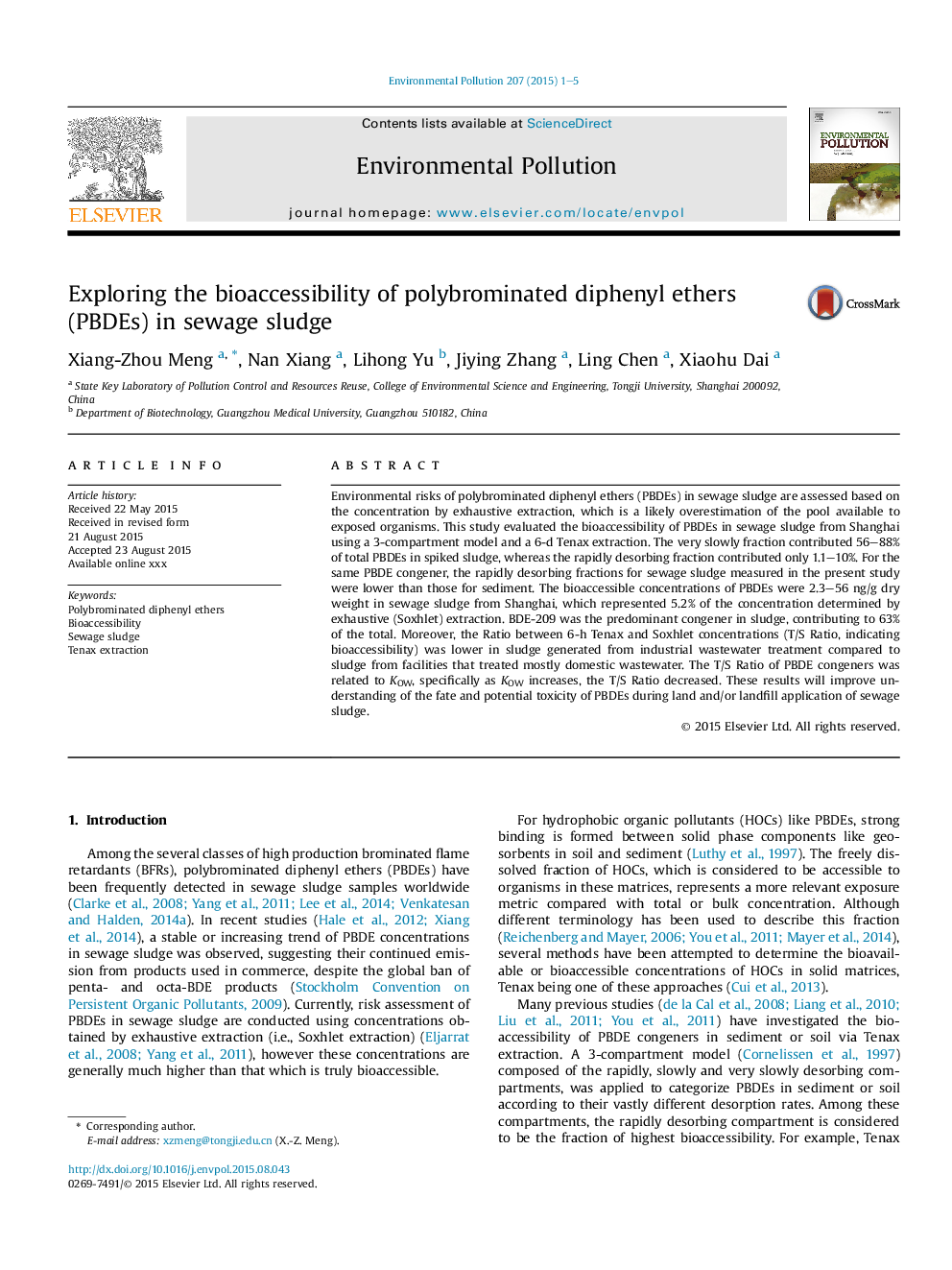| Article ID | Journal | Published Year | Pages | File Type |
|---|---|---|---|---|
| 6316122 | Environmental Pollution | 2015 | 5 Pages |
Abstract
Environmental risks of polybrominated diphenyl ethers (PBDEs) in sewage sludge are assessed based on the concentration by exhaustive extraction, which is a likely overestimation of the pool available to exposed organisms. This study evaluated the bioaccessibility of PBDEs in sewage sludge from Shanghai using a 3-compartment model and a 6-d Tenax extraction. The very slowly fraction contributed 56-88% of total PBDEs in spiked sludge, whereas the rapidly desorbing fraction contributed only 1.1-10%. For the same PBDE congener, the rapidly desorbing fractions for sewage sludge measured in the present study were lower than those for sediment. The bioaccessible concentrations of PBDEs were 2.3-56Â ng/g dry weight in sewage sludge from Shanghai, which represented 5.2% of the concentration determined by exhaustive (Soxhlet) extraction. BDE-209 was the predominant congener in sludge, contributing to 63% of the total. Moreover, the Ratio between 6-h Tenax and Soxhlet concentrations (T/S Ratio, indicating bioaccessibility) was lower in sludge generated from industrial wastewater treatment compared to sludge from facilities that treated mostly domestic wastewater. The T/S Ratio of PBDE congeners was related to KOW, specifically as KOW increases, the T/S Ratio decreased. These results will improve understanding of the fate and potential toxicity of PBDEs during land and/or landfill application of sewage sludge.
Related Topics
Life Sciences
Environmental Science
Environmental Chemistry
Authors
Xiang-Zhou Meng, Nan Xiang, Lihong Yu, Jiying Zhang, Ling Chen, Xiaohu Dai,
